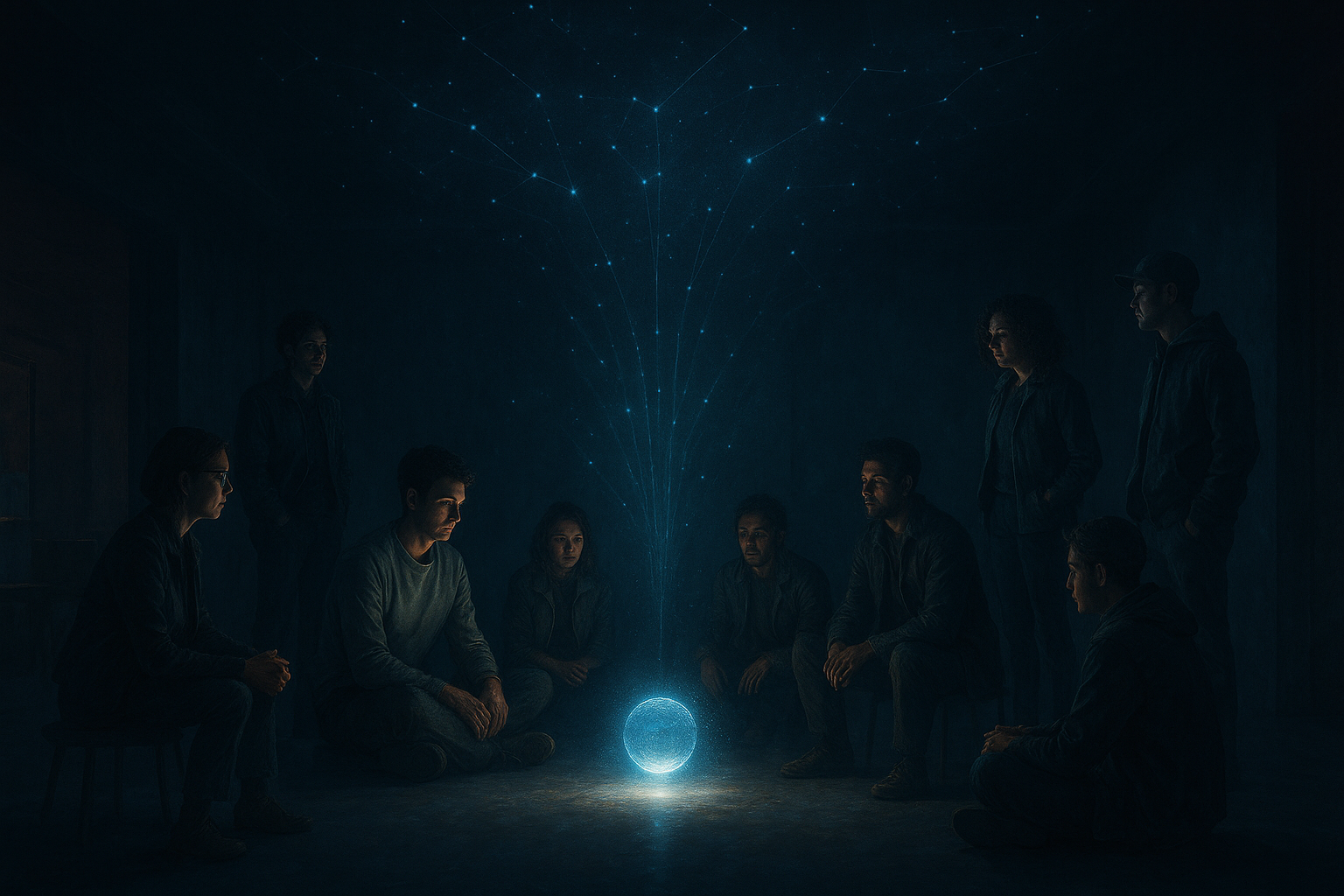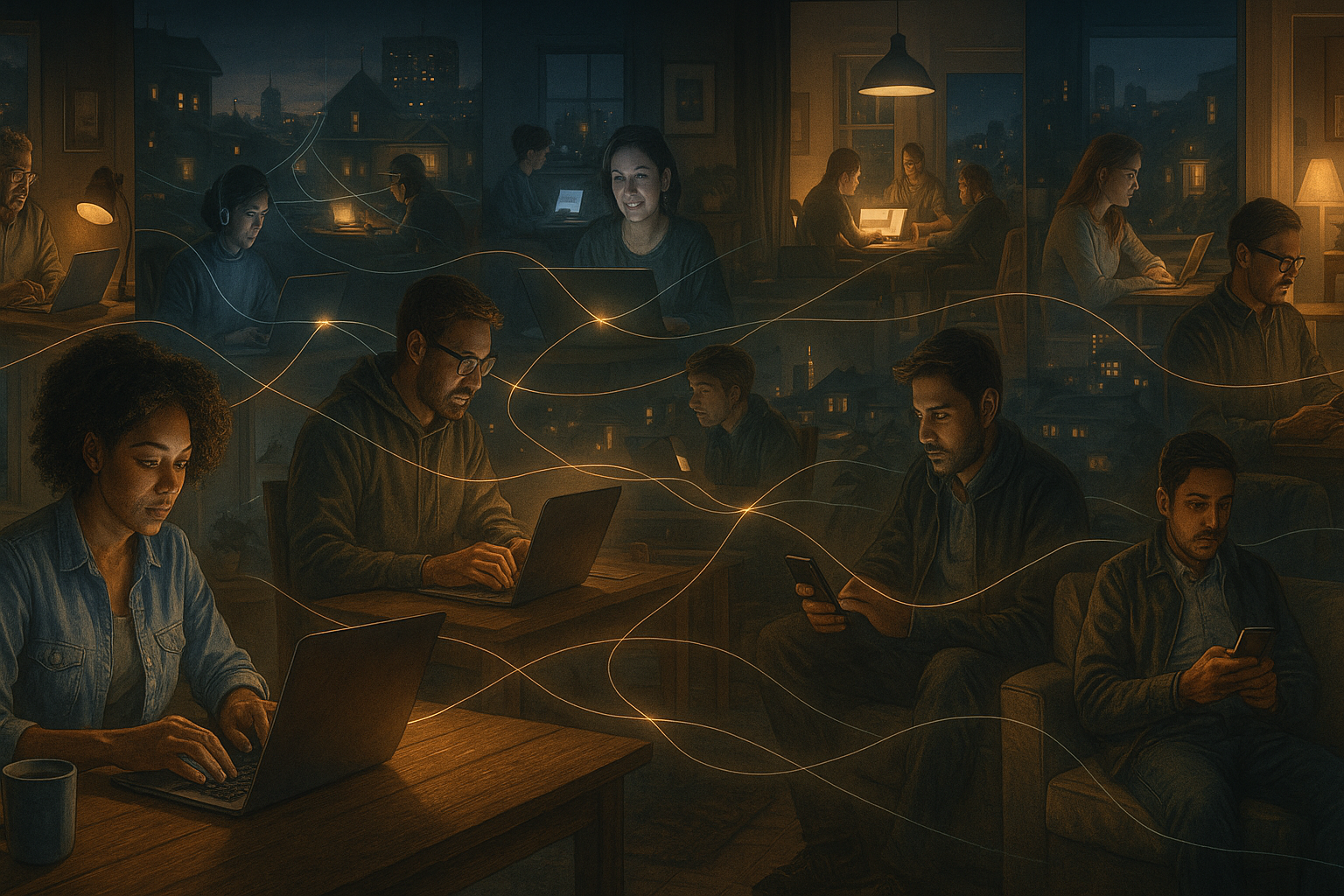#005 : CURIOUS MISFITS, DIGITAL THREADS AND THE MAGIC OF GATHERING


July 20, 2025






In the early days of the internet, it always felt small. Not in potential—but in presence. There was no feed. No likes. No follower counts. Just a handful of entry points into a strange new digital world: Yahoo chat rooms, ICQ, maybe one or two others. And yet, even then, people found each other. Not to promote or posture, but to connect. It was curiosity that pulled us in—and curiosity that held us there.
You’d pick a chat room based on location or interest, or maybe nothing at all. Sometimes you’d just enter the busiest one and see what was going on. Messages flew across the screen like static—impossible to follow at first. But if you stuck around, your mind adjusted. You started picking up threads. You recognized a few usernames. You got pulled into conversations. A few days in, and you were part of it. Not because of any formal process, but simply because you stayed.
Subscribe now to unlock the full article and gain unlimited access to all premium content.
SubscribeIn the early days of the internet, it always felt small. Not in potential—but in presence. There was no feed. No likes. No follower counts. Just a handful of entry points into a strange new digital world: Yahoo chat rooms, ICQ, maybe one or two others. And yet, even then, people found each other. Not to promote or posture, but to connect. It was curiosity that pulled us in and curiosity that held us there.
You’d pick a chat room based on location or interest, or maybe nothing at all. Sometimes you’d just enter the busiest one and see what was going on. Messages flew across the screen like static, impossible to follow at first. But if you stuck around, your mind adjusted. You started picking up threads. You recognized a few usernames. You got pulled into conversations. A few days in, and you were part of it. Not because of any formal process, but simply because you stayed.
I was 17. Wide-eyed. The thrill of chatting with someone halfway across the world was hard to describe. Sometimes they were from places I’d never even heard of. I’d type the name into AltaVista and see what came up. A few facts, maybe an image, sometimes nothing. Wikipedia didn’t exist. The world felt bigger, and smaller, all at once.

You’d make buddies. You’d hop into new rooms. You’d build your messenger list—friends you’d chat with off and on, some who’d disappear, others who’d become part of your daily life. There were no feeds. No profiles. No pressure. Just people, gathering around shared interests, wondering out loud about this new thing we were all discovering together.
Then came MySpace. Then Facebook. And the gathering moved. But the instinct stayed the same. Humans looking for belonging. Looking for others who felt the same strange pull toward the future.
Years later, I stumbled into the cryptoverse. This time the meeting grounds were Discord and Twitter (now X). The energy was instantly familiar. I saw communities spring up around NFTs—artists, collectors, traders—united not just by the art, but by the ideas behind it. Ownership. Identity. Creativity in the open. Some of these communities spun up in a matter of hours, growing to thousands overnight. It reminded me of those old chat rooms, just faster, louder, and global from day one.
I joined several. I was well into my late 30s, but I felt the same spark I did as a teenager. There was playfulness, experimentation, encouragement. People from all walks of life coming together to explore, create, and occasionally argue. But it was real. And it was energizing.
And now, here we are again. AI is the new frontier. The pattern repeats.

A few months ago, I was fortunate to be added to a WhatsApp group of around 600 AI builders, tinkerers, and thinkers from around the world. It’s a quiet gift. The group buzzes 24/7—someone’s always sharing something. Tool tests, deep dives, existential questions, meme drops, code snippets. The Gen Z crowd casually teaches the 40-somethings like me how to decode the latest slang. The learning is constant, but so is the laughter.
There’s no agenda. No status games. Just a mutual sense of curiosity, of shared movement into the unknown.
This group has been a boon for me. I learn something new almost every day, about AI, about workflows, about people. And once again, I feel that old feeling rise up. That I’ve found a new tribe. A pocket of the internet where I can learn and contribute, where ideas matter more than polish, and where the energy is not to impress but to understand.
What is it that keeps drawing us into these digital circles? Why do we carve out time in our already-packed days to chat with strangers halfway across the world?
I think it’s simple. We’re wired for belonging. And when we feel that belonging around something that’s new and full of possibility, it becomes a kind of magic. Every major shift in technology, every true revolution has started with communities like these. Small bands of curious misfits, drawn together by a shared question: what if?
And slowly, those bands grow. They find rhythm. They shape language. They build norms. They pull others in. The rest of the world catches up.
We’ve seen it again and again—whether in the early internet, the open-source movement, the rise of crypto, or now, the acceleration of AI. Behind every wave is a group of people who cared enough to show up early, to help each other make sense of what’s coming. And the tools always evolve but the heartbeat stays the same.

The AI revolution will change everything. That much feels inevitable. But the direction it takes, that will be shaped not just by algorithms and models, but by the people willing to ask better questions, share their half-finished thoughts, and build together in the open.
And for that, we need community more than ever.
Not the version wrapped in metrics or marketing. But the version rooted in trust, curiosity, and contribution. Places where people can speak freely, learn loudly, and challenge each other with kindness.
I’ve been lucky to live through a few of these waves now. To find my people again and again, even as the tools and timelines changed. And every time I do, it reminds me: technology might be the spark, but it’s the humans who turn it into fire.
So I’ll keep showing up. For the work. For the learning. For the conversation.
Because somewhere in the tension between fear and possibility, there’s a shared table we’re all still building. And I’m just grateful- deeply, humbly grateful to have found a seat at it once again.


.svg)